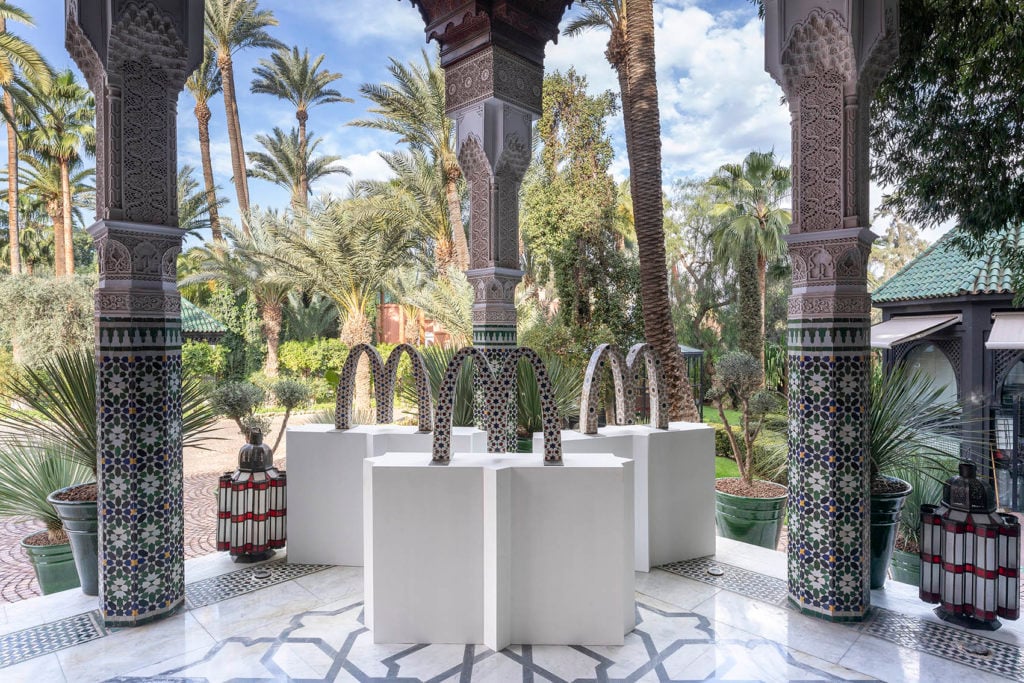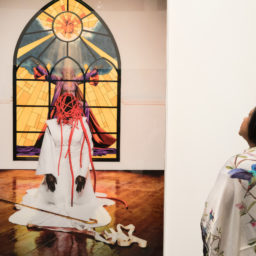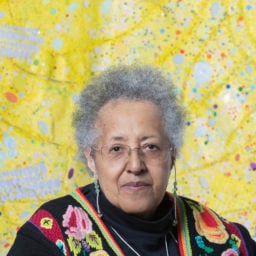As Western museums seek to diversify their collections, and art collectors clamor to discover the next big thing, the market for contemporary African art has never been so hot.
Factor in the ritzy backdrop of the Mamounia Hotel in Marrakesh, and it is unsurprising that the third edition of the 1-54 Contemporary African Art Fair this past weekend was a roaring success. But with increased sales comes growing concern that the majority of the works snapped up by collectors are heading to Europe and North America, with few staying in the continent.
Several dealers reported better sales than last year’s edition. For a boutique fair, there was an unusually high number of VIPs representing major institutions, including the Tate Modern in London, Centre Pompidou in Paris, and from the US the Brooklyn Museum, New Museum, and Smithsonian.
The Moroccan iteration of the fair, which gives a platform for artists from Africa and its diaspora, welcomed 20 galleries and some 6,000 collectors from February 20 through February 23. This year, it had the biggest ratio of galleries from Africa to date, with 14 of the 20 participating galleries based on the continent.
Director Touria El Glaoui, who launched the fair seven years ago in London and then in New York, brought it to Marrakesh in 2018. Speaking on the preview day, she told Artnet News: “It is unbelievable to see the progress since 2013 in terms of the visibility of artists from the African continent. We still have a long way to go but this is night and day compared to when we originally started 1-54.”
After name checking several of the major museums represented on the guest list, El Glaoui name dropped an international gallerist. “I just saw Jay Jopling with White Cube. This was completely unimaginable when I started,” she said. Now, everyone is “trying to discover new artists, get into the game, and make sure they are part of this discourse,” she added.
Hot on the heels of London’s February auctions, the name of the up-and-coming Ghanaian artist Amoako Boafo was being murmured around the fair. One of his paintings sold at Phillips in the artist’s auction debut for $881,432, more than ten times its high estimate.
As with any artist who becomes a market darling overnight, there is a risk that speculators can enter the fray, which can lead to ballooning prices that can damage artists’ careers when they pop. To fuel anxiety, the collector and dealer Stefan Simchowitz, who is notorious for his role at the eye of the Zombie Formalism boom (and bust), was reportedly behind Boafo’s memorable auction debut.
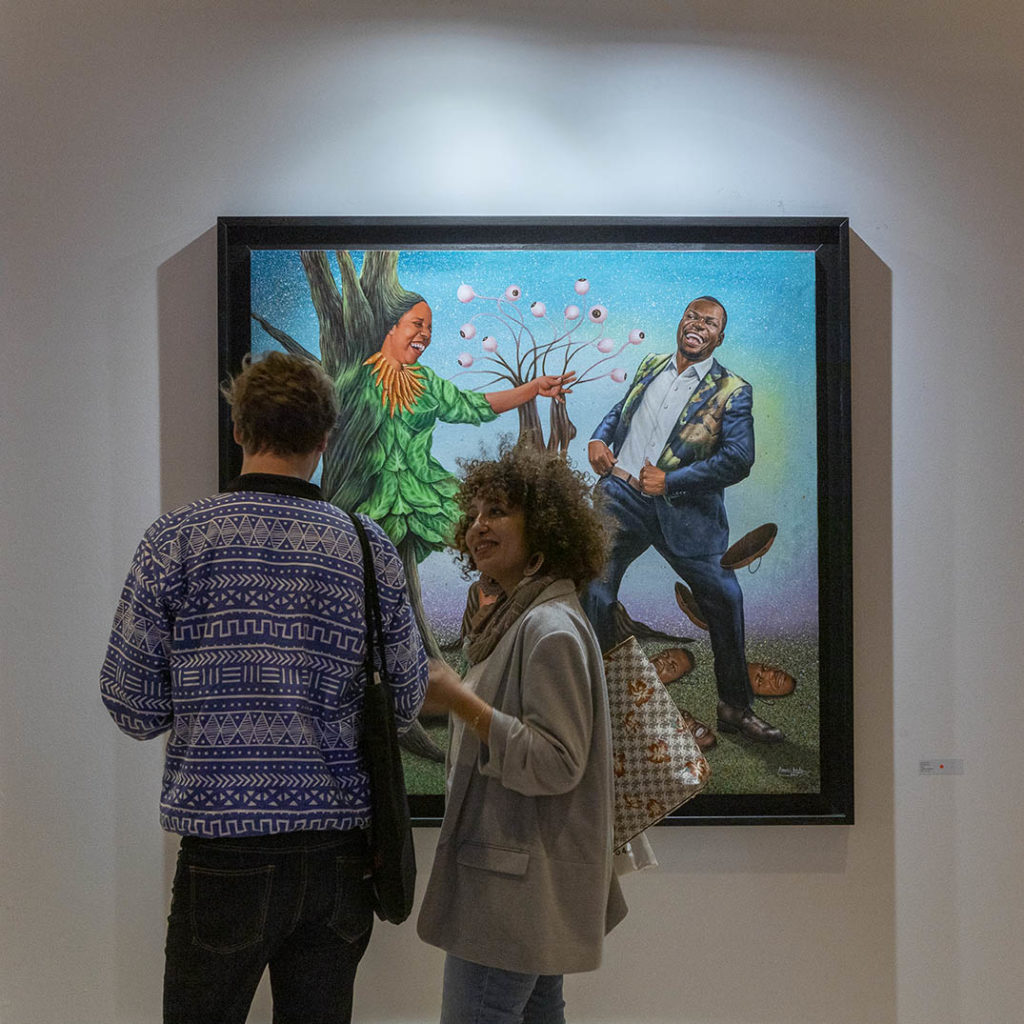
Installation view of 1-54 Marrakech. ©Nicolas Brasseur.
But El Glaoui is not worried. She credits the spectacular rise in Boafo’s market in part to the the patronage of the Miami-based art collecting family, the Rubells. Last year Boafo became the first artist-in-residence at their new private museum, which opened to coincide with Art Basel in Miami Beach. This kind of exposure can be a game-changer for an artist.
With this in mind, El Glaoui announced that 1-54 has launched a number of partnerships to create artists’ residencies. The Nigerian photographer Lakin Ogunbanwo was selected for a 2021 residency at the Thami Mnyele Foundation in Amsterdam, and the MACAAL museum in Marrakesh will choose another artist showing in the fair’s London edition in October.
Exports or Exploitation?
For Jean David Nkot, a 29-year-old Cameroonian artist with a solo presentation at the young French gallery Afikaris, the surge in foreign interest in African art is a source of concern.
“Right now we are having this conversation about restitution, about how all of our heritage is outside the continent,” Nkot said. “If I want to see a sculpture of my ancestor I have to get a visa, leave my country, and pay entrance to a foreign museum.” He fears that in a few years “we could find ourselves in a similar situation where all the best works by Africans will be in Europe.” He added that there is something exploitative about the secondary market interest, when works bought on the primary market for low prices are resold for the profit of foreign collector-speculators.
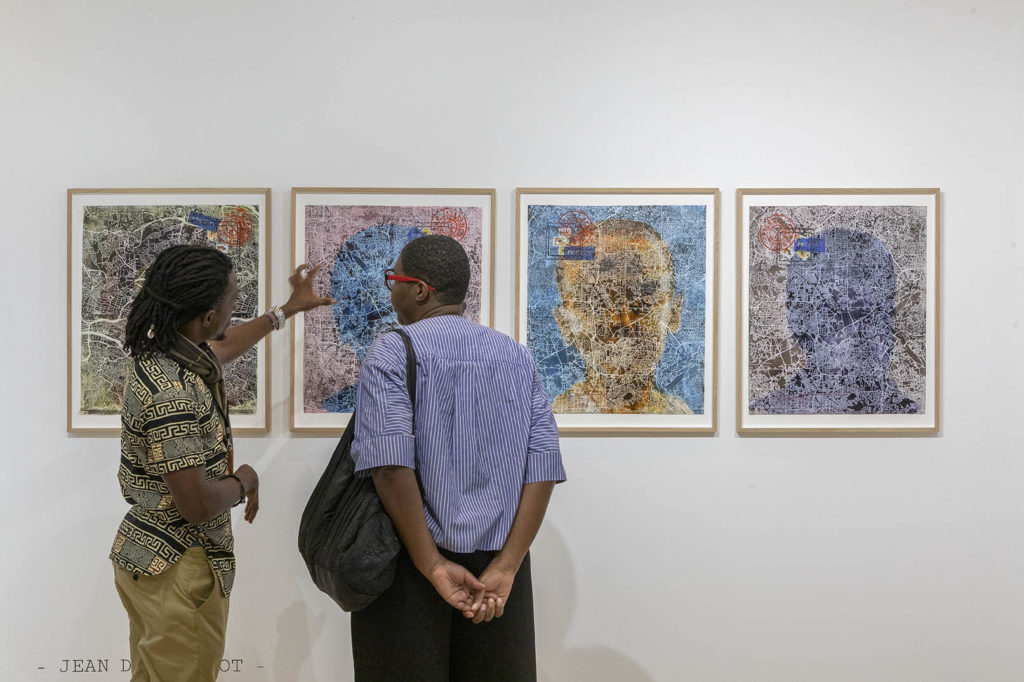
Installation view of 1-54 Marrakech. ©Nicolas Brasseur.
Nkot hopes to see more African collectors engaging in the market, who can offer up opportunities to showcase new works in Africa. On opening day of the fair, two of Nkot’s works had sold to European collectors for €3,300 ($3,500). “Of course, it is great to have outside interest in African artists, but it is a point of pride for me to be collected by African collectors,” he said.
While the market for African art is growing in Europe and the US, 1-54 is aware of the need to grow interest at home. “Moroccans are now super interested in buying pan-African art where before they were just buying Moroccan art,” El Glaoui said.
1-54 is also trying to educate collectors who have traditionally dealt directly with artists about the benefits of working with galleries. “Buying through galleries and at art fairs is a very Western market model, so it has been very hard for us to get collectors to come over and to see the potential of this space,” El Glaoui explained. “Their number is growing, even if it is not as fast as I would like it to grow,” she admitted.
Growing the Market in Africa
Dealers are also increasingly recognizing their role in helping to develop local markets. “When I am selling an art piece one of the things I look for is for it to stay on the continent,” gallerist Cécile Fakhoury said. She founded her eponymous gallery in Abidjan, Ivory Coast, in 2012. “If we keep going as we are, in ten or 20 years we will see all the major pieces in foreign countries.”
In 2018 Fakhoury launched a second gallery space in Dakar, Senegal. “Opening in Dakar was a statement. I wanted to be clear that I am going to develop on this continent,” Fakhoury said. “I could have opened in France or in Belgium, both places I have connections with, but I feel this imbalance of selling 80 percent of art outside of the continent is crazy. This is why I’m going to fairs on the continent, and building a network of collectors from places like Morocco, Nigeria, and South Africa.”
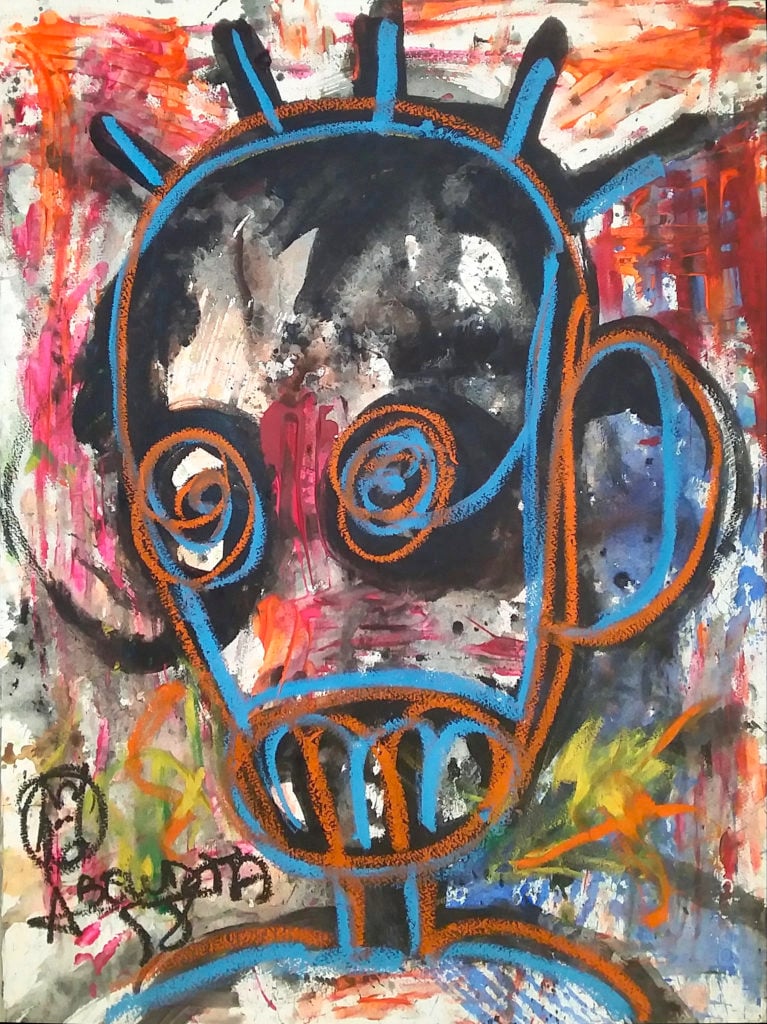
Aboudia, Môgô Dakar #1, 201. Courtesy Galerie Cécile Fakhoury (Abidjan, Dakar).
Fakhoury said it is important to resist the seduction of the secondary market. “While we have been trying to build a primary market the secondary market already joined the dance,” she says. “Auctioneers are calling me all the time, but we are about growing slowly, it is not just about putting stuff in sales.” She believes that African collectors are starting to understand the importance of keeping artworks on the continent.
Collector Othman Lazraq, who founded the MACAAL museum in Marrakesh to house his family’s collection of African contemporary art, is a committed believer in culture as a lever for greater development.
“We have to support our art before anything else,” Lazraq said. He stresses the importance of a collector opening a museum in order to educate audiences about the creativity that is happening all across the continent. “The collector’s role is not just to buy stock but to show it, and I would be glad if exhibiting our collection in the museum is inspiring other collectors to do the same.”
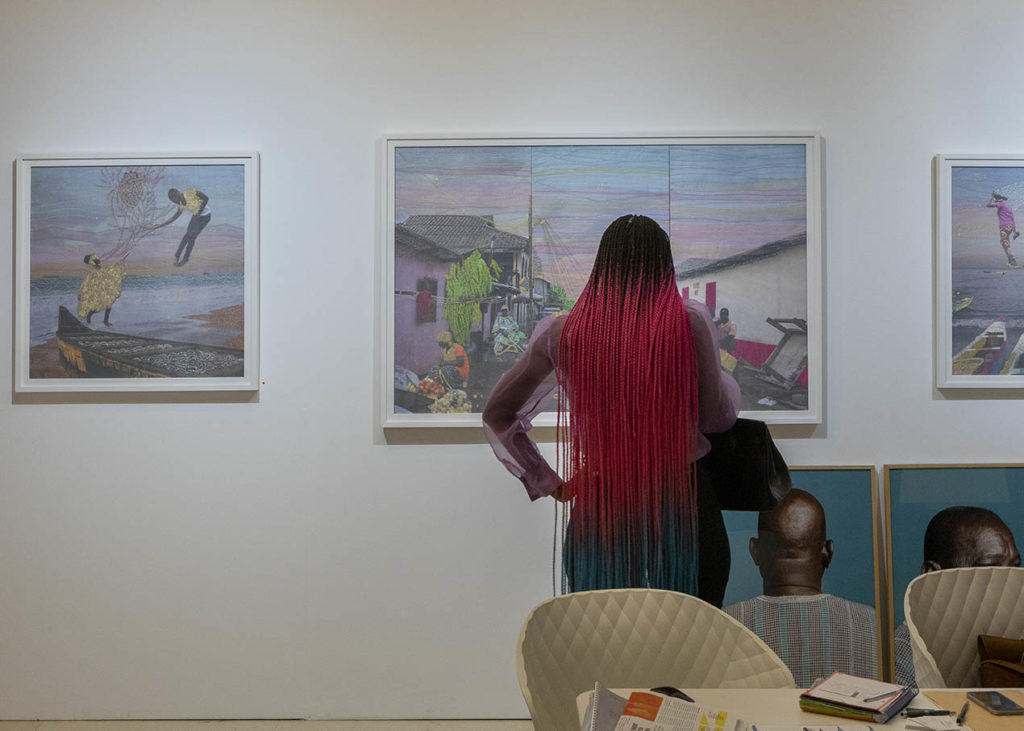
Installation view of 1-54 Marrakech. ©Nicolas Brasseur.
The Senegalese art collector Amadou Diaw described this is an “incredibly positive” moment for African art. “There are plenty of collectors in Africa, and there are now more and more platforms for art,” he said. Diaw founded the Musée de la Photographie de Saint-Louis Senegal to share his collection. He namechecked the Dakar Biennale, and the city’s Museum of Black Civilizations, as well as the Fondation Zinsou in Cotonou.
“You have to understand we are seeing these more where there has been faster economic growth, such as in Nigeria, and the Anglophone countries, but it is happening across the continent.”
Diaw plays down concerns that Western countries are plundering African contemporary art. “It doesn’t worry me that works are being globally exported,” Diaw said. “It means that African culture is going global, and I support that.”
